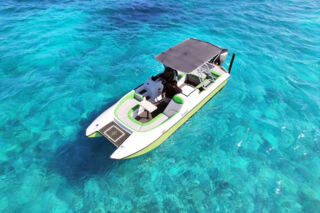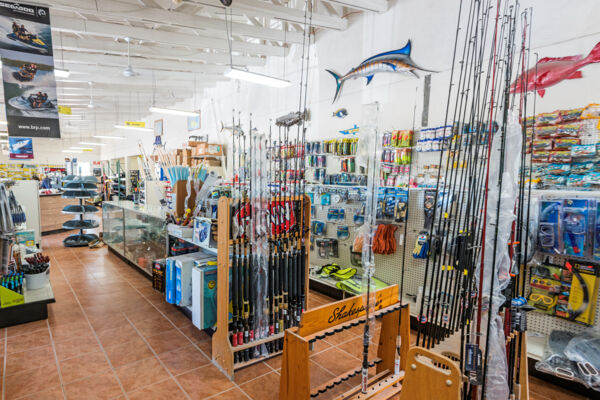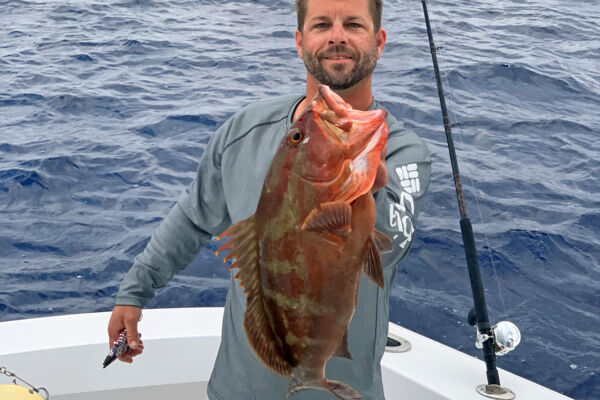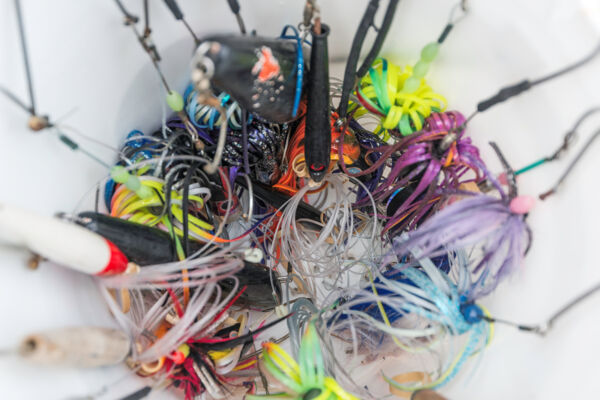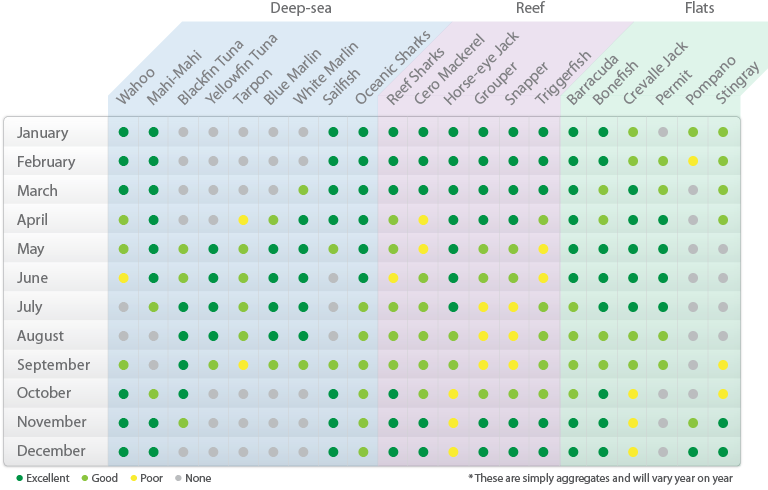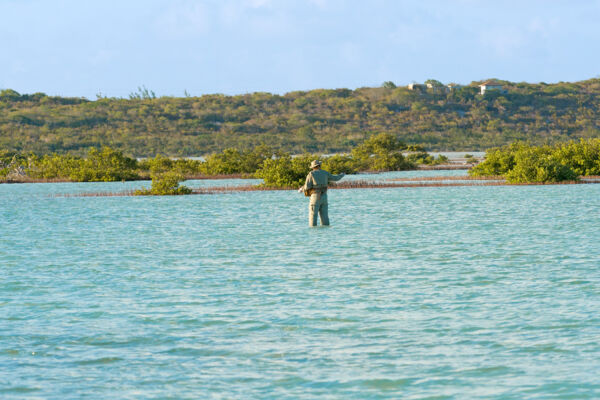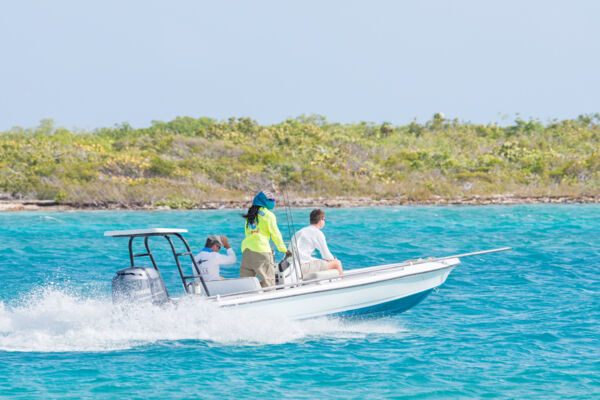Providenciales Fishing



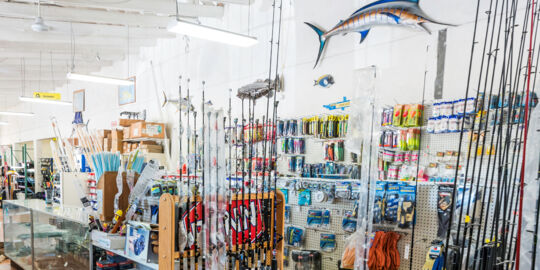


See Turks and Caicos Fishing for general information on seasons and fishing throughout the country.
Providenciales is the center for the excellent sport fishing found in the Turks and Caicos. Every year, several tournaments take place here, from the international Caicos Classic deep-sea billfishing event to many smaller reef and bottom fishing contests. Amazing world-class bone fishing is also found on the Caicos flats surrounding Providenciales and the Caicos Islands.
A fishing adventure can be a great way to put some excitement into your Turks and Caicos vacation.
Fishing Licenses and Limits
- All visitors 16 and older must have a fishing license when fishing in the Turks and Caicos. Children under 16 do not require a fishing license.
- Most fishing charter companies either include licenses with their charters, or are able to sell licenses at a minor cost.
- 1-day and 30-day fishing licenses are available across Providenciales, including at all primary marinas.
- 1-day fishing licenses cost $10 from government offices that provide them, and $10-15 from marinas, charter companies, and other businesses that supply fishing licenses.
- 30-day fishing licenses cost $30 from government offices that provide them, and $30-35 from businesses.
- Issuers of fishing licenses will need to see a government-issued photo ID of applicants.
- A person holding a recreational fishing license is allowed to keep 10 pounds of fish (which may be cleaned), and one ‘trophy fish’ (which may exceed 10 pounds in weight), per day.
- Generally, most edible fish must be at least 6 inches in length to be kept. In the Turks and Caicos, Nassau grouper has a fishing season, which is typically open from March to November. It is illegal to be in possession of Nassau grouper outside of the season.
Protected Areas and Seasons
There are many national parks and nature reserves on Providenciales, and it’s illegal and a criminal offense to fish, or collect conch or lobster in these regions. If you’re not fishing with a local tour business, it’s your duty to know what areas are off limits.
Fishing at the popular beaches of Grace Bay, Leeward Beach, the Bight Beach, and Turtle Cove is not allowed, as well as at the popular diving sites of Northwest Point, French Cay, and West Caicos.
There’s a proposed change (2015) to the Turks and Caicos National Parks Ordinance that would allow for responsible catch-and-release bonefishing in protected areas. There appears to be no opposition to the changes, and it’s expected that the law will be enacted sometime in the future.
Providenciales Reef and Bottom Fishing
Reef and bottom fishing is a great water sport that the entire family can enjoy.
Comparatively little skill and strength is necessary for this type of fishing, and bites and catches are far more predictable than with deep sea sport and bonefishing.
Many of the common catches are great for eating (and make a perfect dinner to end the day!), and include red snapper, mutton snapper, gray snapper, Nassau grouper, and yellowtail and jacks.
When reef fishing on an excursion, it’s common to anchor near a viable site either near a reef on in one of the channels between cays and simply cast the lines overboard.
Choosing a Turks and Caicos Fishing Charter
Fishing with one of the local and experienced tour companies definitely increases your likelihood of getting bites.
Generally, booking directly with a fishing company will offer the best rates. However, some resorts and hotels have arrangements with local water sports operators, and it may be possible to book a special through your accommodation. In any case, we advise doing a little online research so you’ll have an idea of the going rates.
Fishing tours tend to be half or a full day in duration. Many businesses are quite flexible with hours and groups. Both a private charter and shared excursions are available Due to the typical coastal reef fishing locations (and perhaps also the less-serious attitude compared to sport fishing!), other activities such as uninhabited cay visits and snorkeling may be part of the day’s activities.
Snacks, drinks, and all necessary fishing equipment are usually included on tours. Lunch is often complimentary on trips over half a day. Some excursions include a beach BBQ on a secluded cay to roast the day’s catch!
Previous fishing experience is typically not required.
A wide range of watercraft are used locally for reef and bottom fishing, and the particular choice for the day is often tailored for the size of the group and destination.
If required, complimentary transport to and from your hotel or resort is often included when you book.
Boat Cruises and Beach BBQs
Island-hopping beach BBQ cruises and snorkeling cruises are popular boat activities. These typically leave from Providenciales, and head up to Half Moon Bay or Water Cay for a picnic on the beach. A usual part of this is the fresh preparation of conch salad. On some tours, captains will toss live conchs out in the water, which are ‘found' by guests snorkeling in the water. This is a touristy version of diving for conch.
Shore Fishing Locations
It’s important to be aware of (and not to fish) in the protected areas on Providenciales. Much of the north coast of the island is part of the Princess Alexandra National Park and is off-limits to fishing.
The Heaving Down Rock area is our only recommended shore fishing site on the island. It’s easily accessible, no hiking is required, and there should be little confusion on the location. Here, the natural water movement in the channel between Providenciales and Mangrove Cay is a natural haven for fish.
There are definitely other legal and decent coastal fishing sites, such as off the Bird Rock area and near South Dock, but public access is difficult.
Near to and on the full moon typically offers the best bites and fishing.
Fishing from the coast doesn’t always give the best results, regardless of the effort put in. In most cases, a fishing boat excursion with a professional guide will give the best experience.
There’s no freshwater fishing in the Turks and Caicos.Fishing Supplies
Providenciales offers two fishing supply shops.
The foremost is Walkin Marine near Downtown Providenciales, which carries a wide selection of fresh bait, hooks, rods, reels, tackle and lures, along with general marine, boating, and repair supplies.
The small yet select shop at Scooter Bob's Car Rental is found near Turtle Cove Marina and stocks bait, basic rods and reels, light tackle and general fishing gear.
Tiny pieces of conch or squid are generally the most effective bait.
Providenciales Deep Sea Sport Fishing
Deep sea sport fishing (also known as blue water or game fishing) is excellent off of Providenciales. Several local sport fishing businesses operate out of Blue Haven Marina and Turtle Cove Marina on Providenciales. This is the most popular (and exciting!) type of sport fishing in the Turks and Caicos.
The vivid blue of the deep ocean water begins only minutes away from the marinas and resorts. Unlike so many other Caribbean and tropical Atlantic locations, at Providenciales, you won’t have to waste time on a long journey out.
The practices of deep sea sport fishing are a little different from reef and bonefishing. Instead of simply casting and waiting, lines from 4 to 10 separate heavy rods and reels are fed out 50 to 100 feet and are kept apart with outrigger booms.
A cruising speed of about 10 knots is maintained and the trolling back and forth off the northern Caicos barrier reef begins.
There’s a constant lookout by the captain, crew, and guests for indicators of game fish. The most common are flocks of seabirds, who feed on schools of small pelagic fish. The birds are not the only ones looking for dinner, as game fish are preying on the schools from below.
Once there’s a hit, a mad rush begins to get the other lines in and an angler takes the fighting chair and starts the long battle to reel in the catch before the sharks get it!
Depending on the species, it can take hours to land the fish. It takes a lot of energy and stamina to fight a large game fish and bring it in, so anglers may take turns during the fight.
The Catch
Sailfish, blue marlin, white marlin, swordfish, shark, yellowfin tuna, blackfin tuna, bigeye tuna, skipjack tuna, mahi-mahi, and wahoo are all found in our waters. There is a bit of a season for some species, so consult our chart.
Although a bit less desirable, barracuda is a common game fish caught.
Edible fish such as tuna, wahoo, mahi-mahi and mackerel are usually kept and preserved in coolers, so you’ll have the option of cooking your catch, or having one of our excellent local seafood restaurants prepare it.
Billfish are typically tagged and released.
Choosing a Business
Providenciales offers several tour operators and fishing business to choose from. Rates tend to be relatively similar.
There are relatively few deep-sea sport fishing companies in the Turks and Caicos, so to ensure availability, we advise that any excursion be reserved well in advance of your arrival date.
Refreshments and snacks are typically included on excursions, along with lunch for trips longer than half a day.
40 to 50 foot sport fishing boats (manufactured by such companies as Bertram, Viking and Hatteras) are the common choice for deep sea sport fishing. These vessels often have fully equipped cabins and lavatories, and some are suitable for overnight adventures. Some businesses offer deep-sea fishing excursions on smaller open boats, but we recommend the full sport fishing boats for full-day trips and when conditions aren’t optimal.
Tournaments and Competitions
There are several sport fishing events that take place in the Turks and Caicos many of which are smaller local competitions.
The primary billfish and game fish tournaments are the annual Caicos Classic IGFA Billfish Release, and the Grand Turk Fishing Tournament. Both of these are multiple-day events.
Providenciales Bone Fishing
The Caicos Islands are ideally suited for bonefishing and saltwater fly-fishing. Beautiful and expansive crystal-clear shallows line the southern coasts of Providenciales, Pine Cay, North Caicos, Middle Caicos, and East Caicos, and the vast majority of these regions see very little human intrusion.
Many interior and sheltered sites are also found on the main islands. Along with bonefish, barracuda is also very common throughout the shallows of the country, and tarpon is sometimes seen.
5-12 pounds (2.25- 5.45 kg) is the common size range of bonefish.
Easily Accessible Bonefishing Locations on Providenciales
There are two viable (and legal) DIY bonefishing spots on Providenciales: Flamingo Lake and Juba Sound in the Turtle Tail area, and Turtle Lake and the nearby wetlands in the vicinity of Cooper Jack Bay.
It’s very easy to get to these scenic sites. Simply drive to the regions shown above and stop wherever it looks promising.
Tours and Excursions
Many of the local fishing tour businesses offer bonefishing excursions. Flats boats and skiffs (suitable for poling) with spotting platforms are the typical watercraft used, yet transport to wading sites is also offered. A knowledgeable and experienced fly-fishing guide can make the difference between catching nothing and a trophy bonefish or tarpon. We suggest selecting those that have spent significant time on our waters.
Lionfish Hunting
Another fishing genre that’s increasing in popularity in the Turk and Caicos is lionfish hunting.
The lionfish is a venomous and invasive fish from the Indo-Pacific that’s taking hold in the warmer Atlantic waters. The lionfish preys on smaller reef fish and has an insatiable appetite, which can damage and change existing food chains, and ultimately result in reef deterioration.
The spines on the lionfish are capable of causing an extremely painful sting to humans, which in rare cases can cause temporary paralysis.
The most common method for catching lionfish both in the Turks and Caicos and globally is by spear or pole spear, and in fact, the lionfish is the only species in the country that may be collected in nature reserves and national parks, be speared, and be harvested with scuba diving equipment. It’s not a typical practice to hook lionfish.
Lionfish are actually excellent and safe eating, with a white flaky texture and a taste similar to snapper. They also have one of the highest percentage of fillet to total weight ratios—with up to 33% of weight being edible and clean fillet. To hunt lionfish, a license must be obtained from the Department of Environment and Coastal Resources (DECR). On Providenciales, their offices are located in the National Environmental Centre in the Bight. Before fishing, it’s important to learn about safely hunting and cleaning lionfish from someone experienced before attempting to do so on your own.
Fishing Companies
